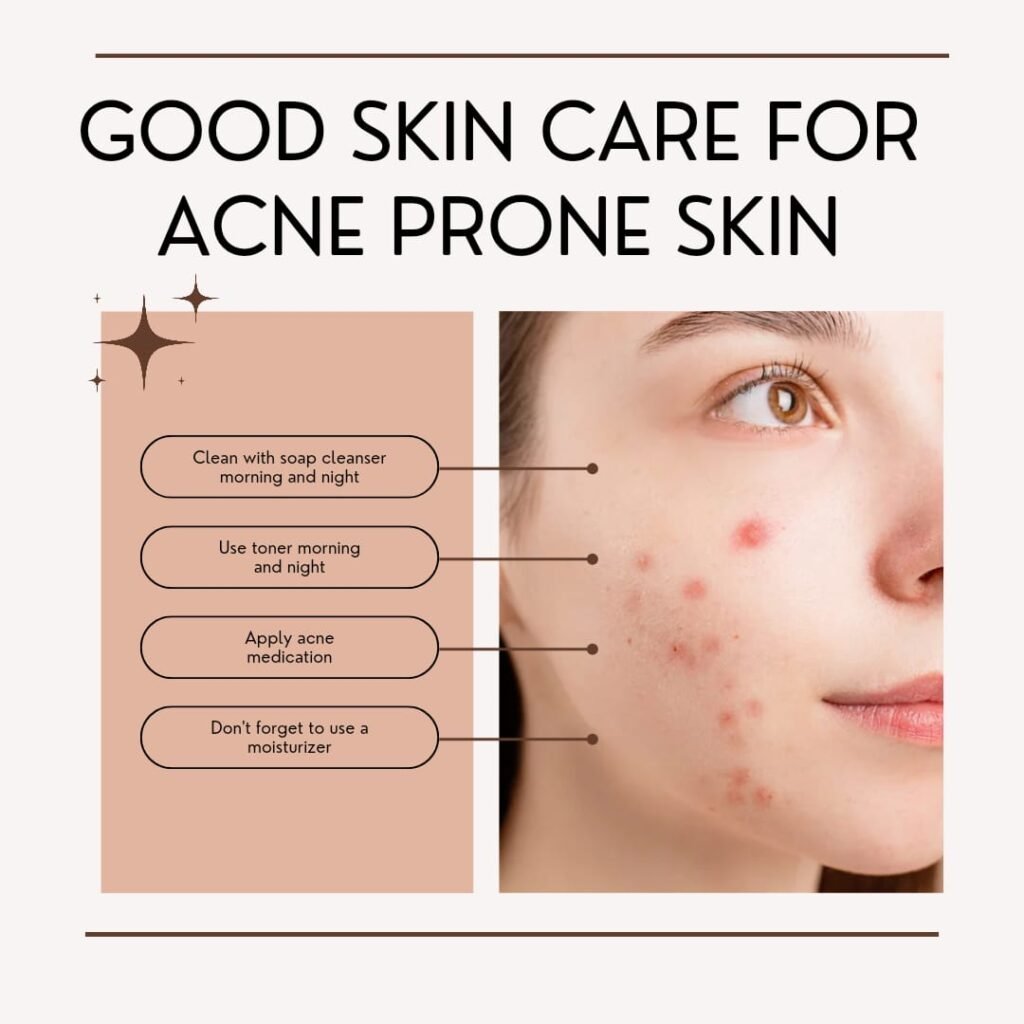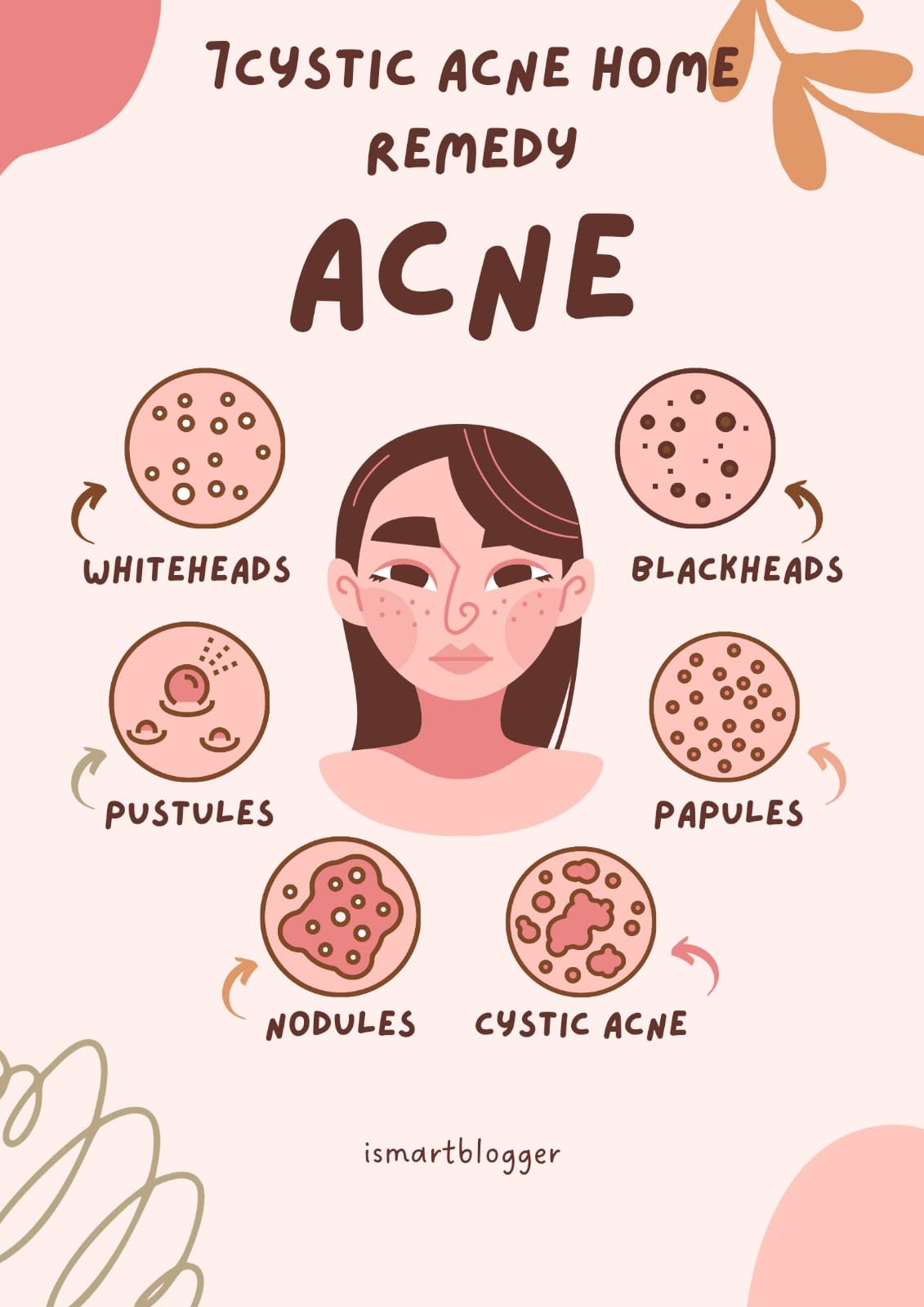Introduction
Cystic acne is a severe and often painful form of acne that affects many individuals, causing both physical and emotional distress. Unlike other types of acne, cystic acne forms deep within the skin, resulting in large, inflamed cysts that can last for weeks or even months. These painful lesions can leave behind scars and hyperpigmentation, significantly impacting an individual’s self-esteem and confidence.
The impact of cystic acne reaches far beyond its physical manifestations. The psychological toll it takes on those suffering from this condition should not be underestimated.
The constant pain, discomfort, and embarrassment associated with cystic acne can lead to feelings of isolation, depression, and anxiety. Given the profound effects that cystic acne can have on an individual’s well-being, finding effective home remedies becomes crucial in managing this condition.
While there are various medical treatments available for cystic acne, such as prescription medications and procedures like cortisone injections or isotretinoin therapy, home remedies offer a more natural and accessible alternative. Home remedies not only provide individuals with a sense of empowerment by taking charge of their skincare routine but also allow them to avoid potential side effects associated with conventional treatments.
Understanding Cystic Acne
The Vexing Villain: Cystic Acne
Cystic acne, a formidable foe among the many battles waged against skin imperfections, is a more severe and stubborn form of acne that sets itself apart from its lesser counterparts. Unlike the common types of acne that affect the surface layers of the skin, cystic acne strikes deeper within, forming painful and inflamed cysts.
These cysts are often filled with pus and can result in unsightly and long-lasting scars. The sheer tenacity of cystic acne renders it one of the most distressing dermatological conditions faced by individuals, causing both physical discomfort and emotional distress.

Unveiling the Unseen Triggers
To confront cystic acne effectively, comprehending its underlying causes is crucial. Hormonal imbalances play a significant role in triggering this relentless skin ailment. Fluctuations in hormone levels during puberty or menstrual cycles can stimulate excessive sebum production – an oily substance secreted by sebaceous glands that lubricate the skin – leading to clogged pores and subsequent inflammation.
Moreover, genetics also render some individuals more susceptible to developing cystic acne. A familial predisposition can increase one’s likelihood of suffering from this enigmatic condition.
Beyond the Surface: Hidden Culprits
While hormones and genetics bear substantial responsibility for initiating cystic acne’s onslaught on our skin, other factors can exacerbate its intensity. Inadequate skincare routines that fail to properly cleanse or exfoliate the skin allow dead cells and impurities to accumulate, further obstructing hair follicles and provoking inflammation beneath the surface. Furthermore, lifestyle choices such as consuming a diet high in refined sugars or carbohydrates may contribute to hormonal imbalances, worsening existing outbreaks or triggering new ones.
Understanding cystic acne necessitates delving deeper into its distinctive characteristics. Its ability to infiltrate the skin’s deepest layers, forming painful cysts, sets it apart from milder forms of acne.
The interplay of hormonal imbalances and genetics creates fertile ground for its emergence, while additional factors like poor skincare practices and dietary choices can intensify its impact. Armed with this knowledge, we can now embark on exploring effective home remedies that combat cystic acne’s tyranny and restore both confidence and glow to afflicted individuals’ skin.
Home Remedies for Cystic Acne
Tea Tree Oil
Cystic acne can be a stubborn and painful condition, but one natural remedy that has shown promising results is tea tree oil. This essential oil possesses potent antibacterial properties, making it effective in combating the bacteria responsible for acne breakouts. Tea tree oil contains a compound called terpinene-4-ol, which has been found to penetrate the skin and target the bacteria deep within the pores.
Additionally, it helps to soothe inflammation and reduce redness associated with cystic acne. To utilize tea tree oil as a spot treatment, start by diluting it with a carrier oil such as jojoba or coconut oil.
Mix 1 part tea tree oil with 9 parts carrier oil to ensure safe application on the skin. Using a clean cotton swab or pad, apply the diluted solution directly onto the affected areas of your skin.
Leave it on overnight and rinse off in the morning. Alternatively, you can incorporate tea tree oil into DIY face masks by combining a few drops with ingredients like bentonite clay or honey for added benefits.
Apple Cider Vinegar
Another remarkable home remedy for cystic acne is apple cider vinegar (ACV). ACV possesses acidity that helps restore the skin’s natural pH level, creating an unfavorable environment for bacteria growth and reducing inflammation associated with acne breakouts. This natural ingredient also contains malic acid, which gently exfoliates dead skin cells and unclogs pores.
To use ACV as an effective treatment for cystic acne, first dilute it with water in a 1:3 ratio (one part ACV to three parts water). After cleansing your face thoroughly, apply this solution using a cotton ball or pad onto the affected areas of your skin.
Let it sit for around 5-10 minutes, then rinse it off with lukewarm water. It is essential to follow this treatment with a moisturizer to prevent dryness and maintain the skin’s balance.
Turmeric Paste
The vibrant yellow spice known as turmeric offers more than just culinary delight – it also possesses remarkable anti-inflammatory properties that can help reduce redness and swelling associated with cystic acne. Curcumin, the active compound in turmeric, inhibits certain enzymes responsible for inflammation in the body. When applied topically, it can alleviate the discomfort caused by cystic acne and promote healing.
To create a turmeric paste for your skin, mix 1-2 teaspoons of turmeric powder with an equal amount of raw honey or yogurt. These additional ingredients enhance the effectiveness of the paste by providing moisture and antibacterial properties.
Apply the paste onto clean skin and leave it on for 10-15 minutes before rinsing off with warm water. Take caution as turmeric can temporarily stain the skin; however, this can be easily removed using a gentle cleanser.
Honey Mask
Honey has been used for centuries as a natural remedy for various ailments due to its potent antimicrobial properties. When it comes to cystic acne, honey’s ability to combat bacteria-causing breakouts is invaluable.
Raw and organic honey contains enzymes that release small amounts of hydrogen peroxide when applied to the skin. This helps eliminate bacteria while soothing inflammation associated with cystic acne.
To enjoy the benefits of a honey mask, start by selecting high-quality raw honey from reputable sources. Gently cleanse your face before applying a thin layer of honey onto the affected areas using clean hands or a brush.
Leave it on for 20-30 minutes before rinsing off thoroughly with lukewarm water. Pat dry your face gently and follow up with a lightweight moisturizer suitable for your skin type.
Aloe Vera Gel
Aloe vera gel has long been revered for its soothing effects on the skin, making it an excellent choice for individuals dealing with cystic acne. Its anti-inflammatory properties help reduce redness and inflammation, while its cooling sensation provides relief from the discomfort caused by acne breakouts. Additionally, aloe vera gel promotes healing and can even help fade acne scars over time.
To utilize aloe vera gel, start by selecting a natural and pure form of the gel from an organic source or directly from an aloe vera plant. Scoop out some gel using a clean spoon or your fingers and apply it onto clean skin, focusing on areas affected by cystic acne.
Gently massage the gel into your skin until it is fully absorbed. For optimal results, repeat this process twice daily – once in the morning and once before bed. Conclusion:
Cystic acne can be both physically and emotionally distressing; however, there are effective home remedies available that can alleviate symptoms and promote healing. Tea tree oil’s antibacterial properties make it an excellent spot treatment option when diluted properly.
Apple cider vinegar helps balance the skin’s pH level while reducing inflammation. Turmeric paste offers anti-inflammatory benefits to reduce redness and swelling associated with cystic acne. Honey masks combat bacteria with their antimicrobial properties, while aloe vera gel soothes inflammation and promotes healing. By incorporating these natural remedies into your skincare routine, you can take control of cystic acne naturally and restore your skin’s health with confidence.





